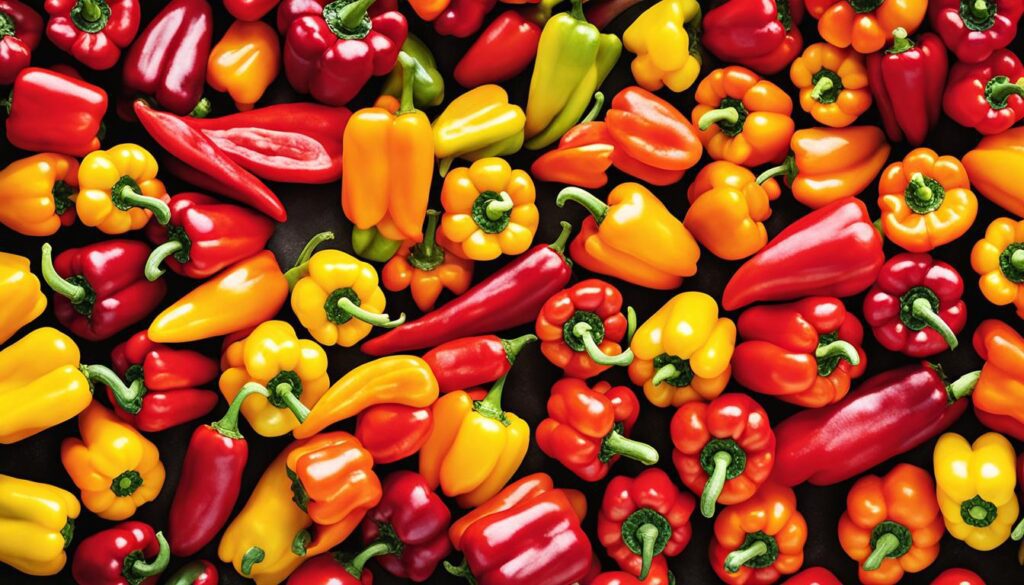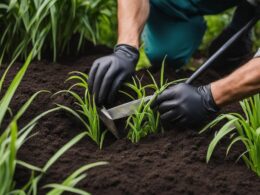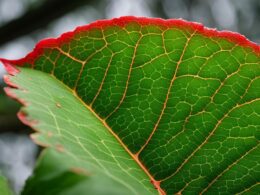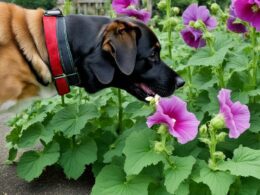When the growing season comes to an end and peppers are ripening, you may wonder how to save pepper seeds for next year. Saving pepper seeds is simple and can save you some money if you want to grow the same pepper varieties each year. In this section, we will explain the process of saving pepper seeds and provide tips and guidelines for successful seed saving.
Choosing Ripe Peppers for Seed Saving
The first, and most important step to storing pepper seeds is to choose fully ripened peppers. This is because the seeds within the peppers are fully developed at this stage, leading to higher germination rates when planted.
Different pepper varieties have different color changes when ripe. For example, jalapeños turn from green to red when fully ripe. By monitoring the color change, you can easily determine if a pepper is ready for seed saving.
Another characteristic to look for in ripe peppers is a slightly softer texture compared to under-ripe peppers. When gently pressing a ripe pepper, it should give a little without feeling too firm.
By selecting fully ripened peppers with developed seeds, you ensure that the seeds are mature and ready for saving, increasing the likelihood of successful germination rates when you plant them.
Harvesting and Drying Pepper Seeds
Once you have chosen ripe peppers, the next step is to remove the seeds for saving. This can be done by cutting the peppers and gently removing the seeds from the placenta. It is important to work in a well-ventilated area when handling hot pepper varieties.
After removing the seeds, they should be spread out and allowed to dry in a well-ventilated area for several days. Proper drying is essential for preserving the seeds and ensuring their viability. Remember to choose a well-ventilated area to promote airflow and prevent mold or mildew from forming. A drying rack or a screen can be used to keep the seeds elevated and allow for better air circulation.
To determine if the seeds are properly dried, you can perform a seed dryness test. Simply take a seed and try bending it in half. If the seed cracks instead of bending, it indicates that it is dry enough for storage.
Once the seeds are dry, it is important to store them properly to maintain their viability for future planting. Store the dried seeds in an airtight container, such as a glass jar or a resealable plastic bag, to protect them from moisture and pests. Label the container with the pepper variety and the date of collection for easy identification.
For optimal seed longevity, store the container in a cool and dry location. Avoid exposing the seeds to excessive heat or humidity, as this can shorten their viability. A cool basement or a refrigerator can be suitable storage options for maintaining seed quality.
By following the steps above, you can successfully harvest and dry pepper seeds for saving. Remember to remove the seeds carefully, dry them in a well-ventilated area, perform a seed dryness test, and store them properly to ensure their future planting success.
Conclusion
Saving pepper seeds is an easy and cost-effective way to ensure that you can grow your favorite pepper varieties year after year. By following these seed saving tips, you can successfully save pepper seeds and maintain their viability for future planting.
First, it is crucial to choose fully ripe peppers. Harvest the peppers when they have undergone a color change and have a slightly softer texture. These characteristics indicate that the seeds within the peppers are fully developed, resulting in higher germination rates.
Next, carefully remove the seeds from the peppers and allow them to dry in a well-ventilated area for several days. Performing a seed dryness test will ensure that the seeds are properly dried for storage. Simply break a seed in half – if it cracks instead of bending, it is ready.
Finally, store the dried pepper seeds in an airtight container in a cool and dry location. This will help maintain their viability for future planting. To preserve genetic diversity in your pepper crop, make sure to save seeds from multiple plants and practice proper storage techniques.
By incorporating these seed saving tips and maintaining seed viability, you can build a collection of pepper seeds that will provide a bountiful harvest year after year. Start saving your pepper seeds today and enjoy the satisfaction of growing your favorite pepper varieties!
Can the Same Method for Storing Tomatillos Be Used to Save Pepper Seeds?
Yes, the same method for storing tomatillos properly can be used to save pepper seeds. Both require the seeds to be fully dried and then stored in a cool, dry place. This will help maintain the seeds’ viability for future planting.










